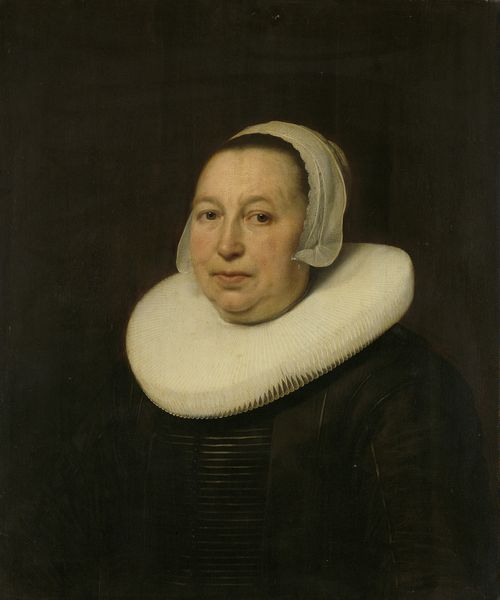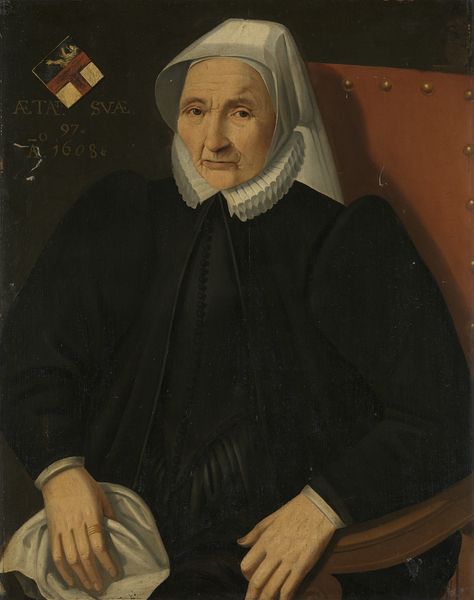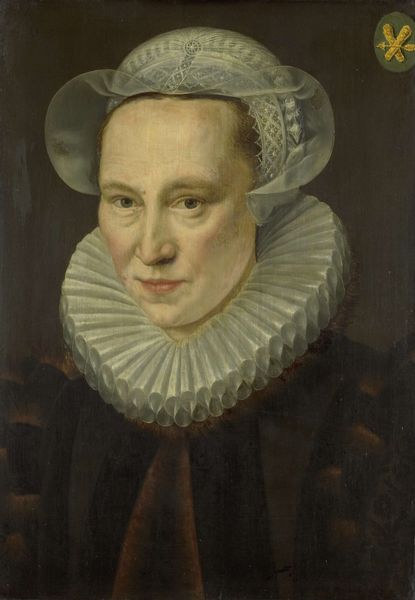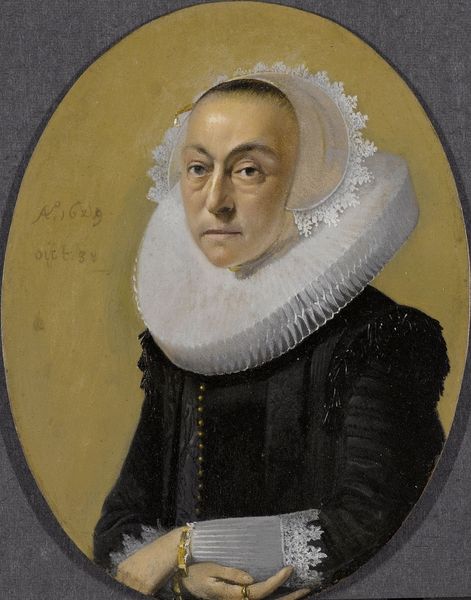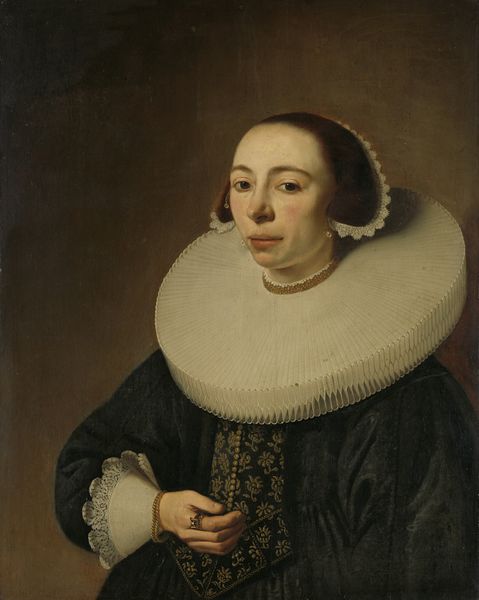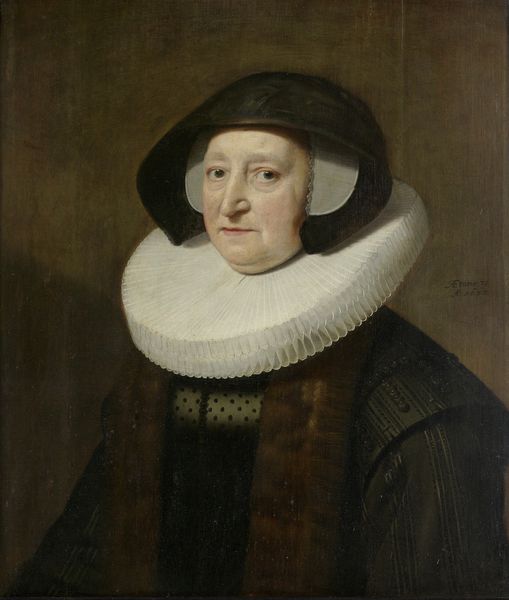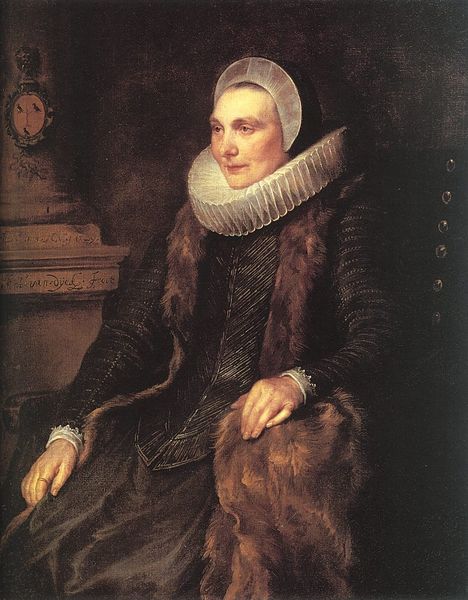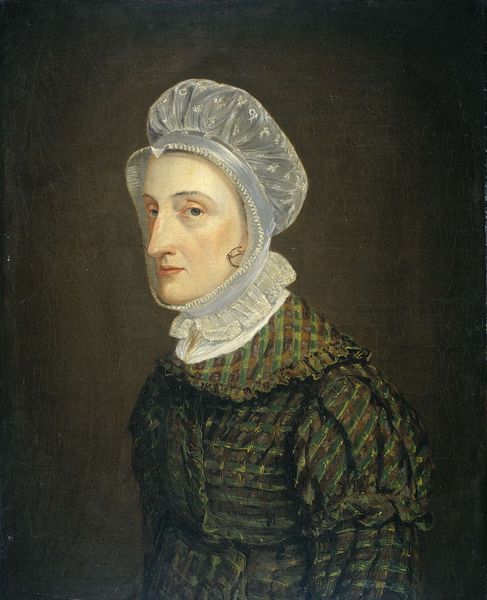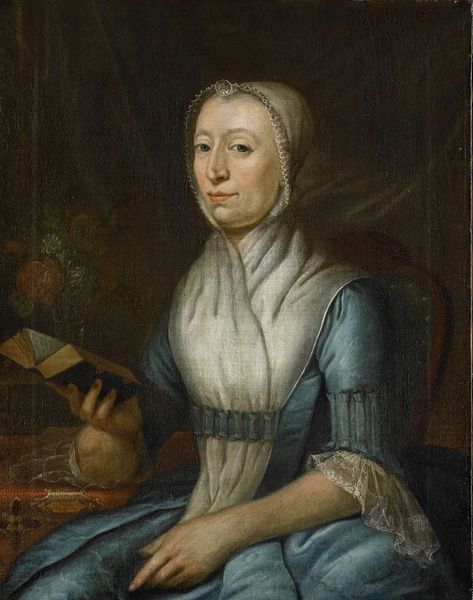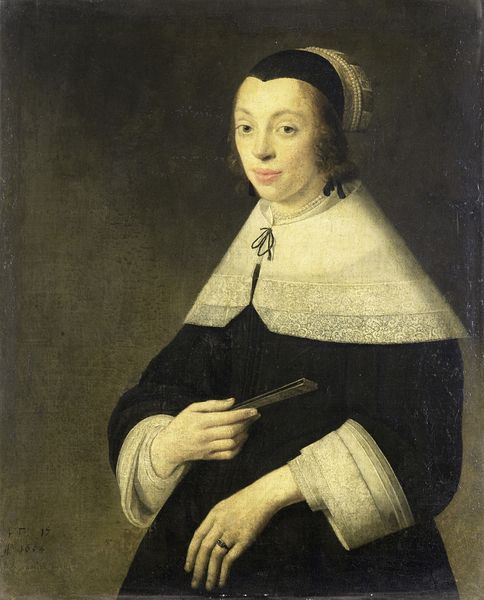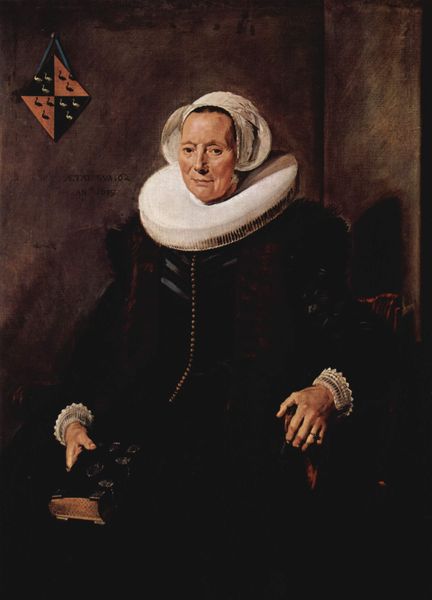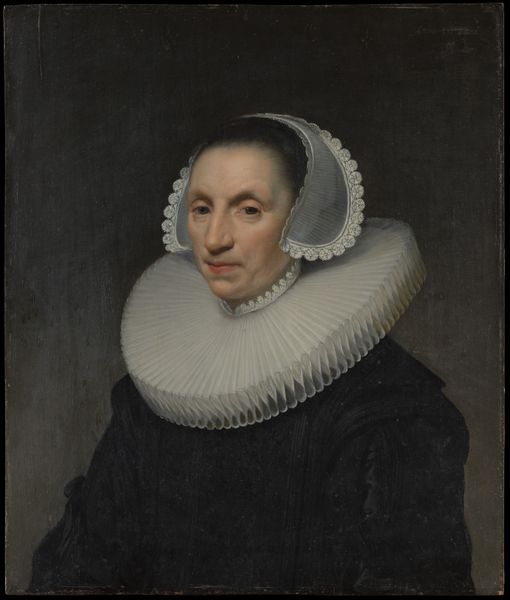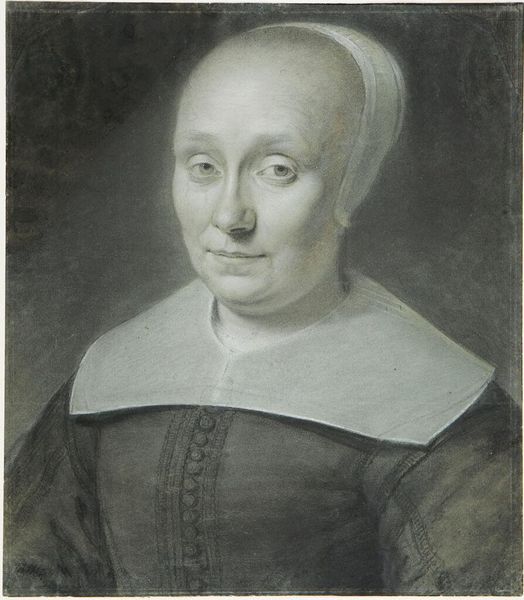
painting, oil-paint
#
portrait
#
figurative
#
baroque
#
painting
#
oil-paint
#
figuration
Copyright: Public Domain: Artvee
Curator: The way light catches the white linen cap is just beautiful; there’s something so Vermeer about it. What do you make of this image? Editor: It’s somber. Intimate, but…heavy. The dark backdrop and clothing, that downward gaze… it’s definitely evoking a feeling of pensiveness, perhaps even melancholy. Curator: Indeed. We are looking at Peter Paul Rubens' "Portret van Adriana Gras," completed around 1633. Rubens was, of course, known for his vibrant and dynamic canvases, and for grand allegorical scenes. So this more subdued character study is striking. The restraint in color suggests that this commission prioritized sober likeness and conveyed respectability. Editor: Respectability, certainly. The high collar and modest attire indicate a woman of status and virtue. But the slight asymmetry in her features, the creases around her eyes...they hint at a life lived, worries held, a personal history the grand master captured faithfully. Curator: The details provide cultural insight. Note how Rubens portrays the textures — the softness of the fur trim against the crisp linen of her cap, contrasted by the rich dark hues of her robe. Each choice reinforces a certain status, but the painting style keeps the portrait fresh. Editor: Agreed. The textures do bring a realism that is very becoming to this painting, but it's her gaze that I can't get over. It almost feels like she's deliberately avoiding eye contact with the viewer, preserving a sense of personal space. I see a desire, really, for something to remain unspoken and intensely private, perhaps revealing the unspoken tensions within bourgeois life at that time. Curator: The ability to create such palpable privacy speaks volumes about Rubens' ability as a psychological painter as well. There is nothing sensational in the rendering of her garments but much is rendered between subject and painter and it comes to life because it feels raw. It is difficult to produce such simple eloquence. Editor: Precisely. It reveals so much about the socio-cultural world, even just the expression she's making can provide much understanding on the position of women in that society, especially one from 17th-century Antwerp. The political forces must have shaped this art for public consumption by Rubens in unique ways. The gaze, therefore, can carry different connotations beyond the obvious interpretation. Curator: A fitting meditation, yes, on the quiet power residing within the personal sphere, amid an age of great public upheaval and display. Editor: It's amazing to consider what stories a single face can hold and how our role in preserving those stories might also change as history marches on.
Comments
No comments
Be the first to comment and join the conversation on the ultimate creative platform.
